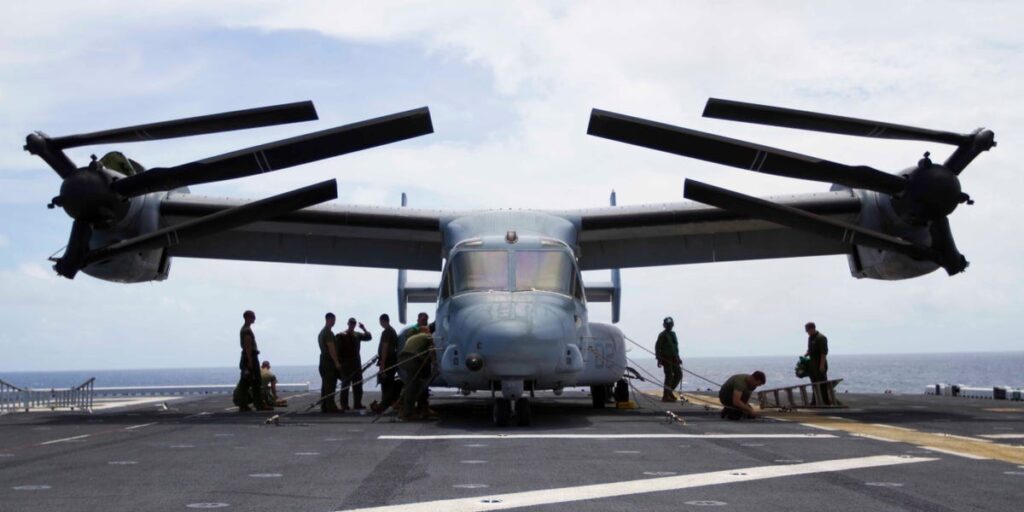Another false start
Production and further testing of the V-22 Osprey continued but with tenuous support from Congress. But there continued to be fatal incidents.
In 2000, the Marines were holding a weapons training course aboard two Ospreys, flying from Yuma airbase in Arizona to Marana Regional Airport, located 25 miles outside Tuscon, when disaster struck.
The first aircraft — call sign Nighthawk 71 — started its descent 2,000 feet too high and began a rapid deceleration, hitting the runway hard but ultimately landing unscathed. The second Osprey — call sign Nighthawk 72 — also began its descent at an unsafe altitude, dropping 2,000 feet per minute at a speed just under 45 mph.
Toward the end of its rapid descent, Nighthawk 72 lost lift in its right rotor, roughly 245 feet above the ground, causing the aircraft to stall and roll. The Osprey then crashed and exploded, killing all 19 Marines on board.
In an 8,000-page crash report, the Corps said that “human factors” were the primary cause of the crash. The report stopped short of attributing the cause to pilot error, but the head of Marine aviation said at a press briefing at the time “that the pilot of the ill-fated aircraft significantly exceeded the rate of descent established by regulations for safe flight.”
“Apparently, neither pilot recognized the danger presented by their high rate of descent and low forward airspeed, which is the same in any helicopter that you fly,” Fred McCorkle, then a Marine Corps lieutenant general, said.
“Unfortunately, the pilot’s drive to accomplish that mission appears to have been the fatal flaw,” he added.
Another investigation by the GAO later found that, in the rush to push the Osprey into full-scale production, the Navy failed to perform critical developmental testing on the aircraft. The oversight, it said, ultimately made the aircraft vulnerable to turbulence known as the “vortex ring state,” a potentially fatal turbulence caused by a helicopter’s rapid descent and low speed pushing disturbed air through its blades.
Although the vortex ring state is a known risk for helicopter pilots, it wasn’t clear at the time if the same warnings would apply to the first-of-its-kind Osprey.
It wasn’t until 15 years later that the Department of Defense issued a corrective statement after years of protest from the families of the late pilots, Marine Maj. Brooks Gruber and Lt. Col. John Brow. The Pentagon said that “they had neither the knowledge nor the training to avert the crash.”
Learning from that tragedy, future Ospreys were fitted with alerts and alarms to help prevent a repeat occurrence, and pilots and crews were put through proper training programs.
Read the full article here


